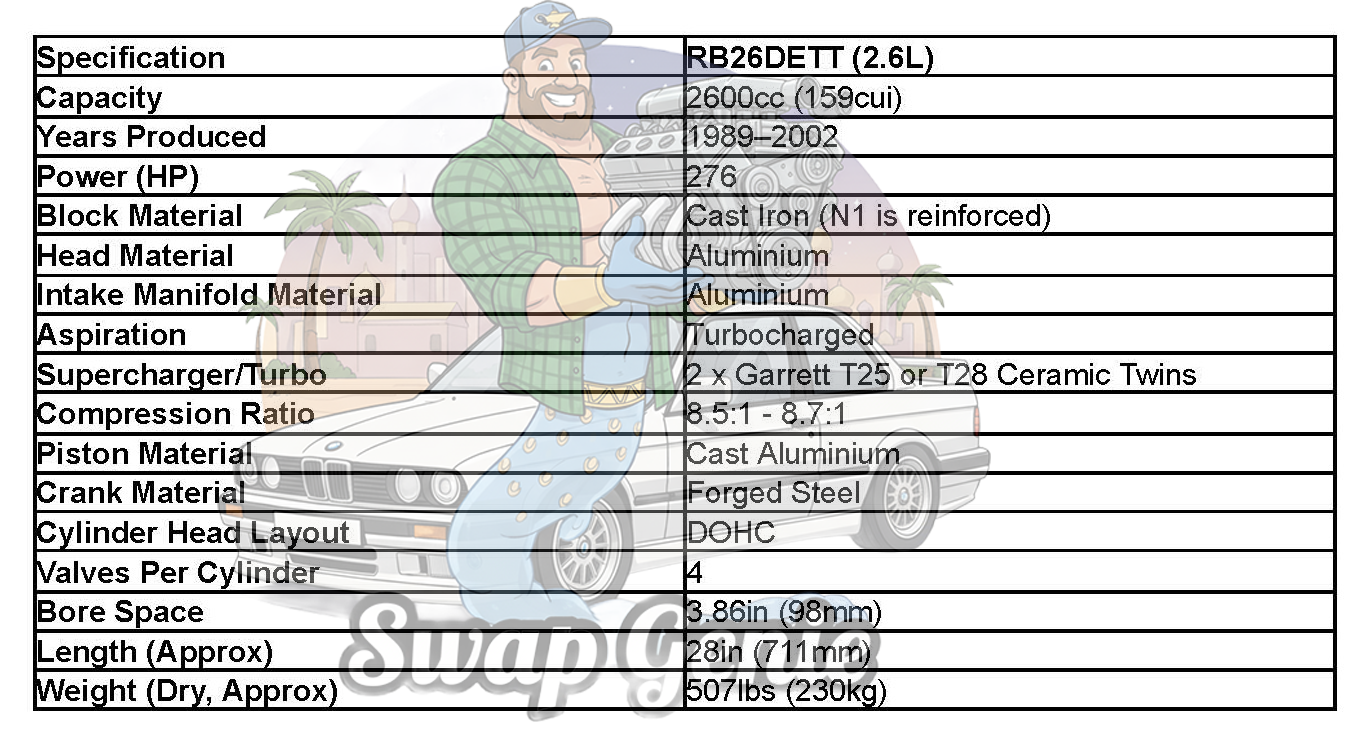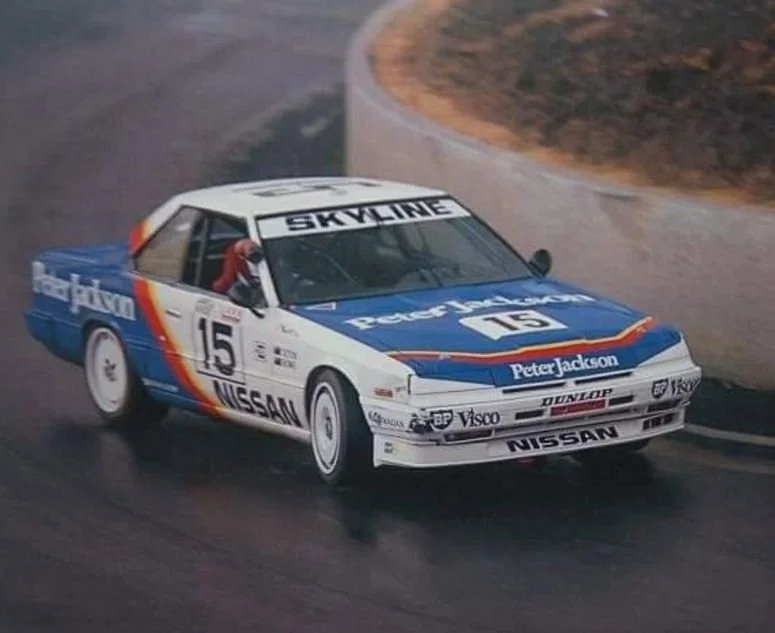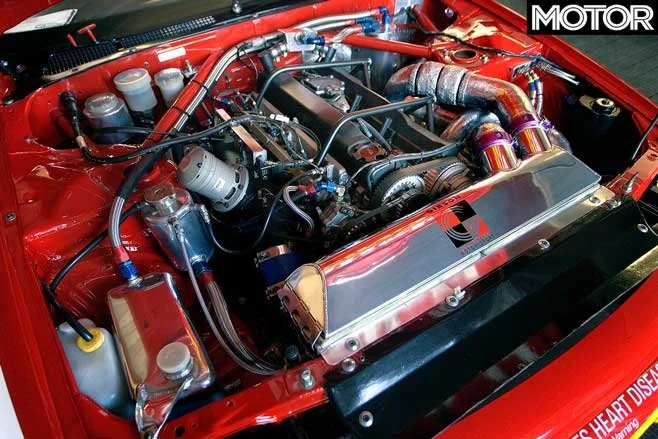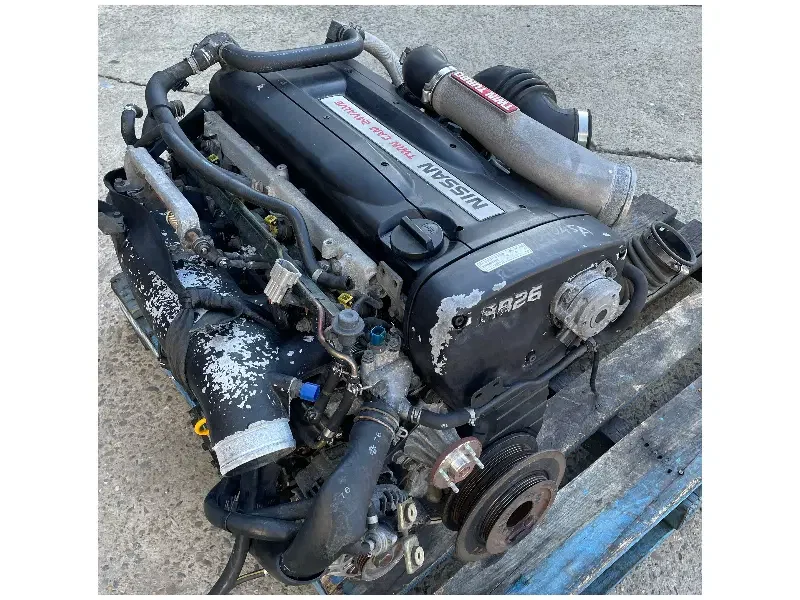ENGINE-PEDIA: Is the RB26DETT the king of JDM performance?
If the Toyota 2JZ is a legend to car enthusiasts, the Nissan RB26DETT verges on being cosidered a mythical beast. The very heart that powered "Godzilla", the iconic R32 Nissan Skyline GT-R, this 2.6-litre twin-turbocharged inline-six engine is a symbol of Japanese automotive engineering prowess, motorsport dominance, and an unwavering commitment to performance.
The RB engine family itself dates back to the mid-1980s, but it was the pursuit of racing glory which saw the reintroduction of the Skyline GT-R in 1989 (the R32 generation) and hence birthed the RB26DETT. For those newcomers, that code stands for 6-cylinder (RB), 2.6L (26), double overhead-cam (D), EFI (E), twin-turbo (TT).
Having tasted success with the FJ20ET-powered Skyline DR30 RS-X and RB20DET-R-powered R31 Skyline GTS-R, Nissan's goal was to dominate Group A touring car racing. To achieve this they needed an engine that was both immensely powerful and incredibly robust.
The R32 GT-R, with its RB26DETT engine, immediately made its mark, achieving astounding success in touring car racing. The road car which was used to homologate the race car was also proving to pack ferocious performance thanks to the twin-turbo power and four-wheel-drive grip.
The R32 Skyline GT-R famously earned the moniker "Godzilla" from the Australian press (see below) due to it coming from Japan and crushing everything in its path: Porsches, Ferraris, Lamborghinis, V8 muscle cars and more. However, the RB26 doesn’t live and die with the R32 as Nissan continued to evolve it through subsequent R33 and R34 Skyline GT-R generations, while tuners were soon pushing the boundaries of what was possible from a street-legal vehicle.
The heart of the angry lizard is an iron block measuring 2.6-litres (2568cc) capacity, with an under-square bore and stroke of 86mm x 73.7mm to favour high-RPM stability when circuit racing. The 8.5:1 compression ratio is boost-friendly, while the alloy DOHC 24-valve head boasts 4-valves-per-cylinder and solid lifters (instead of oil-filled) hydraulic lifters) to further provide a stable platform for the engine to reliably reach high-RPM.
Officially, the RB26DETT was rated at 280hp (206kW) due to the Japanese “Gentleman’s Agreement” to limit power outputs of cars, however the twin Garrett T25 ceramic-wheeled turbochargers ran in parallel and were easily boosted up. Nismo offered improved turbochargers on their lightweight N1 models, which also featured steel wheels in some cases.
As the R32 GT-R Skyline was to be a homologation car, Nissan equipped the RB26 with a forged steel crankshaft and baffled the oil pan. Unfortunately, the oil pumps in R32 GT-Rs are infamous for breaking, which quickly leads to a dead engine. This was remedied in R33 and R34 GT-Rs, while Nismo also produced upgraded engine blocks for their N1 cars, which could be purchased through the aftermarket and provide a perfect base for a high-output street or race engine.
Despite the RB26’s iron block, complex plumbing, and twin-turbochargers it is a compact and fairly light engine. A bare long motor sans manifolds and ancillaries is rated to weigh approximately 184kg, 225kg with ancillaries, and 250kg with a five-speed transmission. For the power outputs which can be made from this motor this little 2.6-litre offers huge punch in a small package.
Similarly the RB26DETT’s external dimensions of (approximately) 870mm (34.25in) long, 665mm (26.18in) wide, and 675mm (26.57in) tall make it a compact unit compared to other straight-6 engines like Toyota’s three-litre 2JZ-GTE or Ford’s enormous four-litre DOHC Barra.
One reason the RB26DETT felt fast, despite its official rating at a mere 280hp, is because the parallel turbos spooled simultaneously, providing a more consistent and linear power delivery. The ceramic turbine wheels used in early versions were light, aiding in spool, but could be fragile under extreme boost or heat. Later N1 versions featured strong steel wheels.
The RB26 also featured individual throttle bodies to enhance throttle response and allows for more precise air metering to each cylinder, contributing to the engine's sharp feel.
The engine's cast-iron block and forged steel crankshaft and connecting rods were designed from the outset to handle significant power, far exceeding its "official" 280hp rating. This inherent strength is a primary reason for its immense popularity in the aftermarket tuning scene.
The RB26DETT is celebrated for its incredible tunability. While the stock turbos and fuel system were limited, the core engine—block, crank, and rods—could reliably handle significantly more power. With upgrades such as larger single or twin-turbo setups, forged pistons, upgraded fuel systems, and standalone engine management, RB26DETT builds routinely achieve well over 1000 horsepower, and have propelled cars like the infamous JUN II Skyline GT-R street car deep into the 6-second bracket on the drag strip.
However, it's worth noting common areas addressed by tuners: the stock oil pump can be a weak point at very high RPMs, and the stock head gasket benefits from an upgrade in high-boost applications. Despite these considerations, the platform's ability to produce astounding power figures with relative reliability is a testament to its original design.
Today many tuners swap the complex twin-turbocharger system for a large single turbo as countless lines, sensors, and failure points can be removed by switching to a modern billet-wheel turbo and contemporary standalone ECU.
The Nissan RB26DETT is more than just an engine; it's an icon. It powered one of the most successful and revered tuner cars in history, dominating race tracks and captivating enthusiasts worldwide. Its distinctive sound, aggressive power delivery, and legendary strength continue to make it a highly coveted powerplant for swaps, restorations, and high-performance builds.
Even with the advent of newer, more technologically advanced engines, the RB26DETT remains a symbol of an era when raw power, meticulous engineering, and motorsport ambition converged to create an automotive legend.






